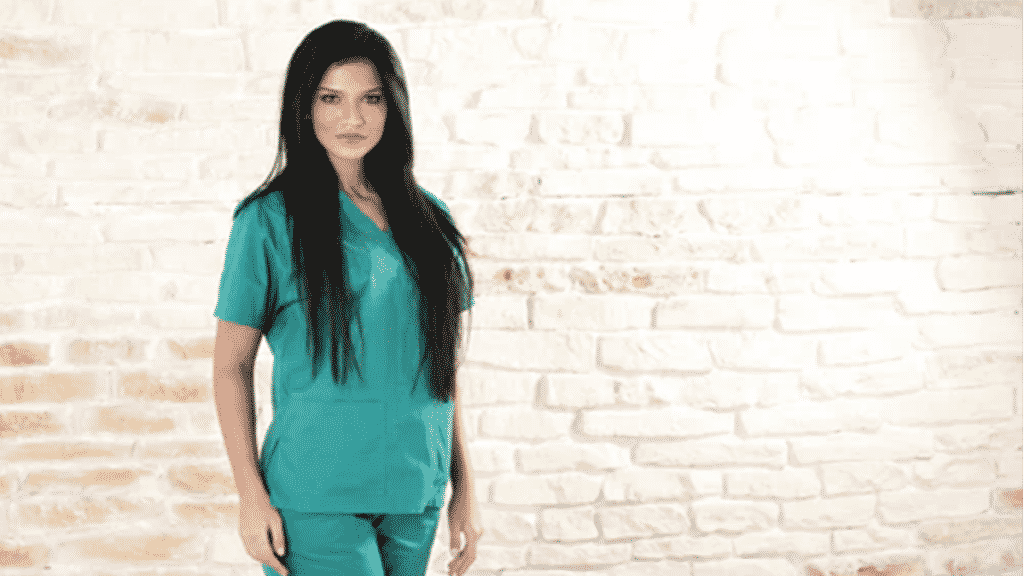Different work sectors have many different uniforms. The most notable and most recognised is probably scrub tops and pants. Associated with medical institutions around the world, most people have been helped by someone wearing this uniform at one point or another.
While scrub tops are available in a variety of different colours and styles, they remain very recognisable. But how did this uniform come about? Is there a difference between surgical and non-surgical scrubs? Are they made of a particular material? How safe are they in such a bacteria-rich environment? Find out more in today’s article.
Medical Scrubs – Everything You Never Knew!
While many industries have changed their uniforms over the years, scrubs are standard for hospitals and clinics. They’re used by nurses, doctors, vets, physiotherapists, and a host of other employees in the medical field. This article will give you a few interesting facts you never knew about this uniform!
What Exactly are Scrubs?
Scrubs are the protective clothing items worn by nurses, doctors and other medical staff. They’re worn during instances when practitioners are most likely to come into contact with bodily fluids such as blood or infectious substances.
The type of material used forms a barrier between the wearer and the substance. Most people associate scrubs with surgery or use in the emergency room. Scrubs are worn primarily by any practitioner that deals with patients daily.
Other industries that have taken to wearing scrubs include dentistry, beauty & spa, laboratory staff and aged care facilities.
A Global Pandemic Introduced Scrubs to the World
While it seems that medical staff have been wearing scrubs forever, the reality is, they have only been around since the 1940s. When the Spanish Flu made its appearance about 103 years ago, doctors realised it was necessary to wear something that protected them from bacteria and virus contamination.
As medical knowledge improved during the ‘40s, medical staff began wearing white gowns and drapes during surgeries. White was the colour of choice since it was commonly associated with cleanliness.
Since the white material tended to glare, the colour was later changed to the green that became synonymous with scrubs. Over the years, styles changed to be more comfortable.
Where Does the Name Scrubs Come from?
The name “scrubs” is derived from the term “scrubbing in.” This is the procedure doctors and nurses perform whilst preparing to enter an operating theatre. Sterilising hands and arms are crucial to preventing the spread of germs or bacteria during surgery.
What are Scrubs Made of?
Scrubs are often worn for very long hours and in some infectious situations. So, it’s obvious then that scrubs should be both comfortable and durable! The most popular fabrics available include the following:
- Polyester
- Cotton
- Elastane
- Wool
- Acrylic
- Nylon
Scrub Colours
Scrubs have come a long way from their original white gown predecessors. Many medical professionals choose not to wear white scrubs to prevent eye fatigue from the glare of lights shining off them.
Some hospitals or medical facilities will colour code their scrubs by department or floor. For instance, nurses working with babies will wear pink. Nurses working in paediatrics might wear animal prints or cartoon prints that children can relate to.
While it’s not a hard and fast rule to colour code departments, it’s a great way to identify the staff in a major medical facility. Common colours include the following:
- White
- Black
- Grape
- Pink
- Navy
- Electric blue
- Mid blue
- Teal
- Red
- Cherry
- Charcoal
- Printed options for paediatrics staff
Benefits of Wearing Scrubs
For medical and spa staff the benefits of wearing scrubs are quite considerable. Some of the more common benefits are listed below:
- Protection: Scrubs are thick enough to prevent any bodily fluids from directly touching the wearer’s skin.
- Comfort: Medical staff often have to reach into awkward positions to get their jobs done. They are also on their feet for a great part of the day. They need comfortable uniforms such as scrubs.
- Functional: In addition to a range of motion, scrubs offer large pockets.
- Efficient: Since they’re made of quality fabric, they can withstand the most rigorous cleaning processes.
- Cost-effective: Fabric choices are cost-effective, making them easy to replace.
- Identifiable: With the addition of company logo prints or embroidery, or even custom colour choices, it’s easy for staff to be identified. This is especially helpful in major hospitals where many different departments share the same space.
- Prevents cross-contamination: Scrubs prevent the potential spread of contagious viruses and infections.
Final Thoughts
In short, scrubs are a sanitary type of clothing worn by a host of different medical professionals. Designed to prevent and minimise places for bacteria to latch on to, they’re effective prevention against contamination.
A variety of colour and design options ensure that your scrub uniform doesn’t have to be uncomfortable or boring. Since they’re easy to clean, durable and offer a wide range of motion, medical professionals can easily feel protected while wearing them!
